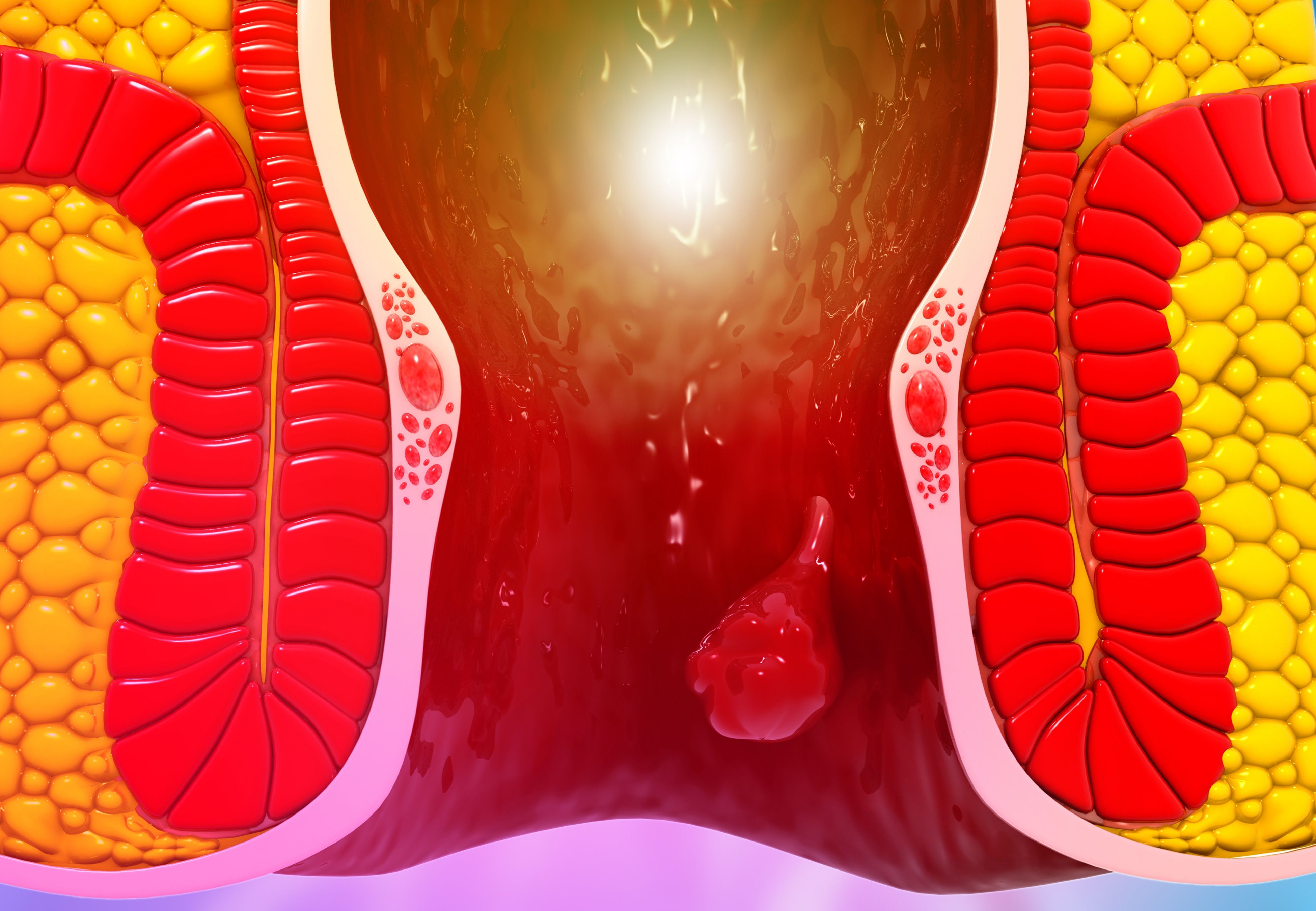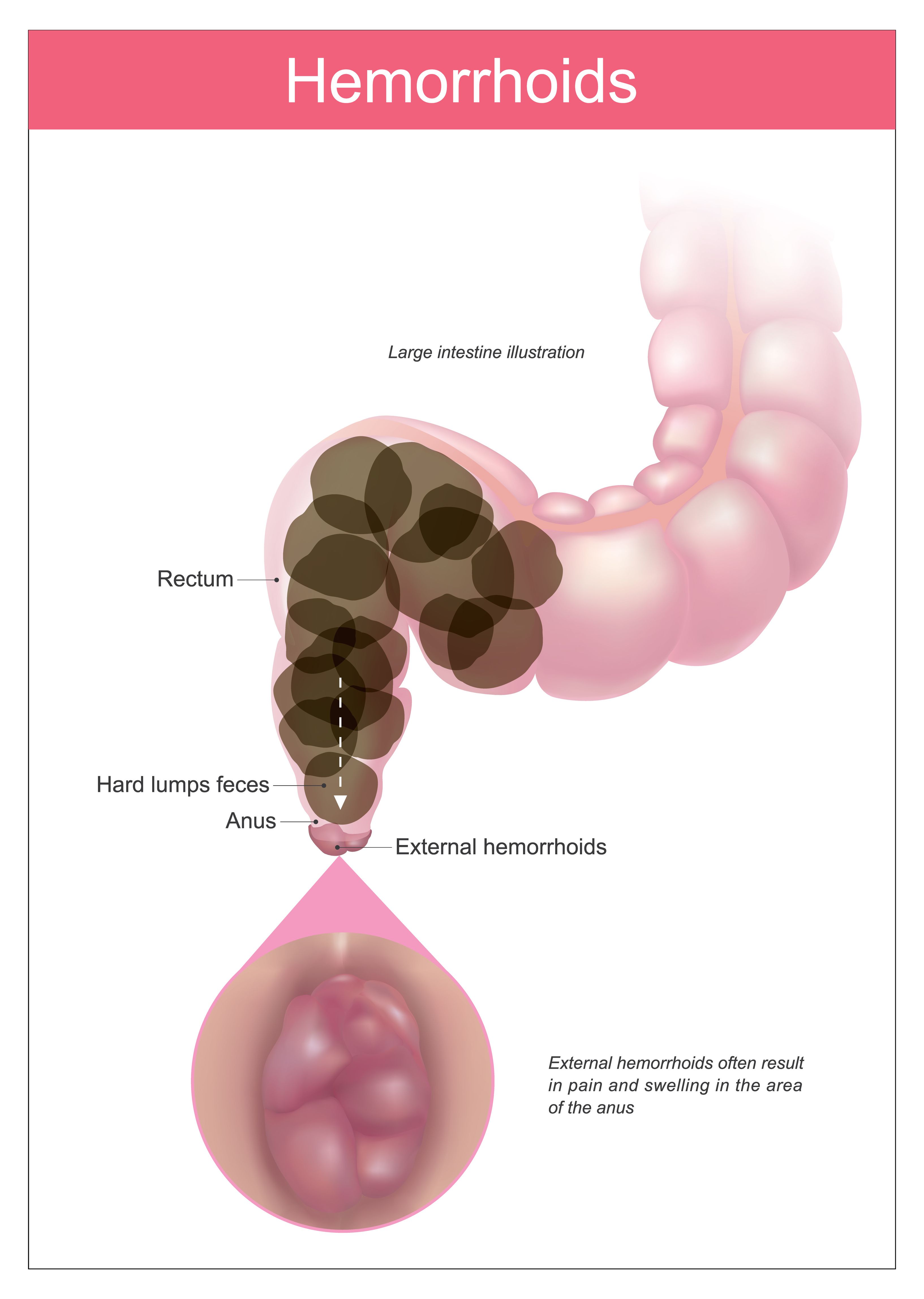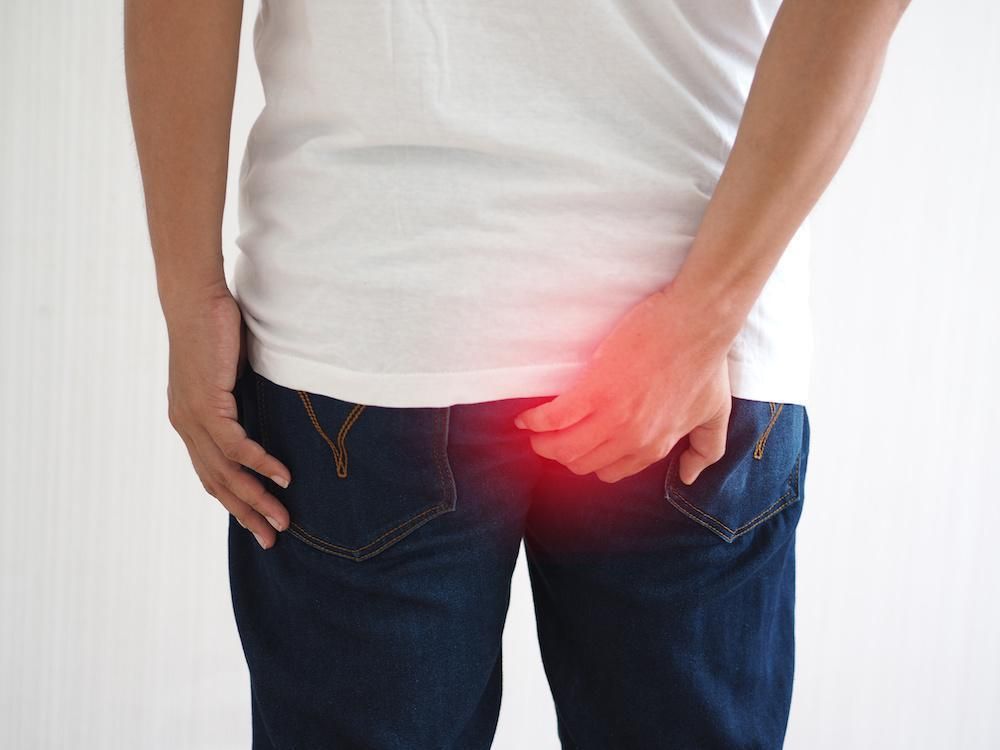Causes of Hemorrhoids
Hemorrhoids
4/15/2024
What Do Hemorrhoids Look Like?
Overview
- Hemorrhoids affect a significant portion of the global population, with 4.4% worldwide and many individuals in the Philippines experiencing discomfort and inconvenience due to this ailment.
- Internal hemorrhoids cause rectal bleeding and a sensation of incomplete bowel evacuation, while external hemorrhoids lead to lumps, itching, and pain, sometimes even blood clots.
- Recognizing symptoms such as pain during bowel movements, bleeding in stool or urine, and swelling around the anus is crucial in identifying and managing hemorrhoids early on to prevent escalation into more serious concerns.
Introduction
Hemorrhoids, a prevalent but often overlooked condition, affect a significant portion of the global population. Globally, 4.4% of people deal with the discomfort and inconvenience brought about by hemorrhoids1. Many individuals in the Philippines also suffer from this ailment.
Despite its prevalence, hemorrhoids are frequently left untreated until they escalate into more serious concerns. This delay in seeking medical attention often stems from a need for recognition of the condition's early signs.
That is why, in this article, we will delve into the crucial aspects of understanding what hemorrhoids look like—identifying and addressing them before they progress.

What Does Hemorrhoids Look Like Based on Its Type?
Hemorrhoids can manifest in various ways, depending on their location and severity, and understanding their different types is important for a proper diagnosis and treatment.
Internal Hemorrhoids
Internal hemorrhoids develop inside the rectum, making them less visible externally. Despite this, they can still cause discomfort and various symptoms.
One common indicator of internal hemorrhoids is rectal bleeding2, which can be observed as bright red blood on toilet paper or in the toilet bowl.
Individuals with internal hemorrhoids may experience a sensation of not fully evacuating their bowels3, as well as the protrusion of these hemorrhoids outside the anal opening during periods of straining.

External Hemorrhoids
External hemorrhoids usually develop under the skin around the outside of the anal opening and can be felt or seen as lumps or bulges4, especially during or after bowel movements. They may also cause itching, irritation, and pain5. In more severe cases, blood clots can form within external hemorrhoids, leading to significant discomfort, swelling, and pain.
When dealing with external hemorrhoids, it's important to be aware of the potential symptoms and seek appropriate medical attention if needed. Maintaining good hygiene and adopting healthy bowel habits can also help manage the discomfort associated with external hemorrhoids.
In some instances, over-the-counter treatments like MPFF: Diosmin + Hesperidin (Daflon® 1000)—a natural tablet for hemorrhoids, as well as lifestyle adjustments provide you with relief.

How to Tell if You Have Hemorrhoids?
Identifying whether you have hemorrhoids involves recognizing specific symptoms associated with this condition. So, if you experience the following signs, it's advisable to consult a healthcare professional for proper evaluation and guidance.
Pain and Discomfort During Bowel Movements
The presence of hemorrhoids, particularly external ones, can lead to various levels of discomfort and pain during the passing of stool. The pain experienced during bowel movements is often attributed to the inflammation and swelling of the blood vessels in the affected area6.
It can be more painful during bowel movements because they are located under the skin around the anal opening, where nerve endings are more abundant. This heightened sensitivity can result in increased discomfort, especially when pressure is exerted on the swollen tissues while passing stools.

Bleeding in Stool or Urine
The bleeding associated with hemorrhoids is typically caused by the irritation and inflammation of the swollen blood vessels in the anal region. Straining during bowel movements, passing hard stools, or friction from wiping can aggravate these sensitive tissues, leading to small tears or ruptures that result in bleeding.
While rectal bleeding is a common symptom of hemorrhoids, it should not be ignored or dismissed. Hemorrhoids are often benign and self-limiting, persistent, or heavy bleeding7. However, you should prompt further medical assessment to rule out other potential causes such as colorectal cancer or inflammatory bowel disease.
It’s recommended to monitor the frequency and volume of bleeding when you’re experiencing bleeding in the stool or urine due to hemorrhoids. This maintains good hygiene practices to prevent infection. You should also consider lifestyle modifications to alleviate symptoms. This may include increasing fiber intake8 and staying hydrated to reduce inflammation.

Swelling Around the Anus
Swelling around the anus is a common manifestation of both internal and external hemorrhoids9.
In the case of external hemorrhoids, the swollen veins near the opening of the anus can create a visibly enlarged and tender area around the anal opening. This swelling may be associated with the formation of a lump or bulge that can be felt externally, especially during activities such as wiping after bowel movements or bathing.
On the other hand, internal hemorrhoids can also contribute to swelling around the anus, albeit without the visible presence of a distinct lump. The internal swelling may result in a generalized feeling of fullness or discomfort in the anal region, often described as a sensation of pressure or heaviness.

Key Takeaway
Having the right and enough knowledge about what do hemorrhoids look like and their different types and symptoms is important for early detection and proper management. That is why if you suspect you have hemorrhoids based on the outlined signs, seeking medical advice is important, as well as taking effective medicines like Diosmin + Hesperidin (Daflon® 1000) to facilitate relief and promote healing.
Buy Diosmin + Hesperidin (Daflon® 1000) today and say goodbye to the pain brought on by hemorrhoids. Don't let hemorrhoids disrupt your life any longer—seize the opportunity for relief and a more comfortable tomorrow.
REFERENCES
- Kibret, A. A., Oumer, M., & Moges, A. M. (2021). Prevalence and associated factors of hemorrhoids among adult patients visiting the surgical outpatient department in the University of Gondar Comprehensive Specialized Hospital, Northwest Ethiopia. PLOS ONE, 16(4), e0249736. https://doi.org/10.1371/journal.pone.0249736
- Fontem, R. F., & Eyvazzadeh, D. (2023, July 31). Internal hemorrhoid. StatPearls - NCBI Bookshelf. https://www.ncbi.nlm.nih.gov/books/NBK537182/
- Hemorrhoids | ASCRS. (n.d.). https://fascrs.org/patients/diseases-and-conditions/a-z/hemorrhoids
- Crna, R. N. M. (2023, November 29). What external hemorrhoids look like and how to get rid of them. https://www.medicalnewstoday.com/articles/322732
- Anal itching - Symptoms and causes - Mayo Clinic. (2022, October 19). Mayo Clinic. https://www.mayoclinic.org/diseases-conditions/anal-itching/symptoms-causes/syc-20369345
- Hemorrhoids - Symptoms and causes - Mayo Clinic. (2023, August 25). Mayo Clinic. https://www.mayoclinic.org/diseases-conditions/hemorrhoids/symptoms-causes/syc-20360268
- Crna, R. N. M. (2023, December 18). What to know about bleeding hemorrhoids. https://www.medicalnewstoday.com/articles/326040
- Eating, Diet, & Nutrition for Hemorrhoids. (2022, July 23). National Institute of Diabetes and Digestive and Kidney Diseases. https://www.niddk.nih.gov/health-information/digestive-diseases/hemorrhoids/eating-diet-nutrition
- Johnson, S. (2023, November 21). What can cause anal swelling? https://www.medicalnewstoday.com/articles/326004#perianal-abscess
2025